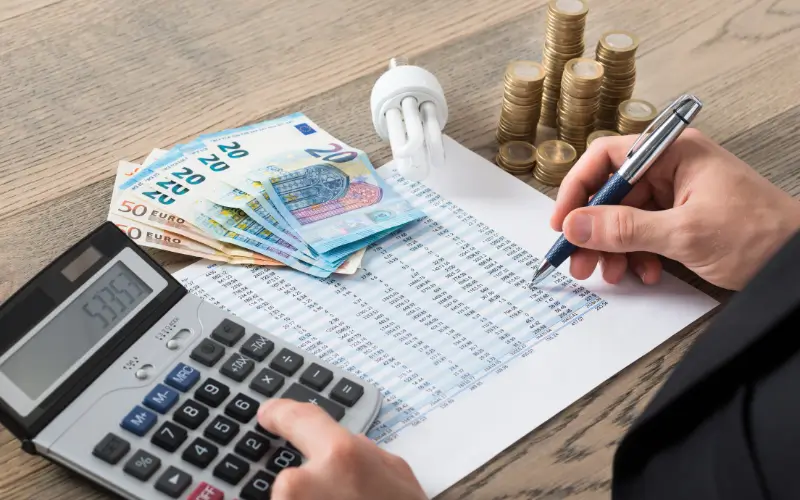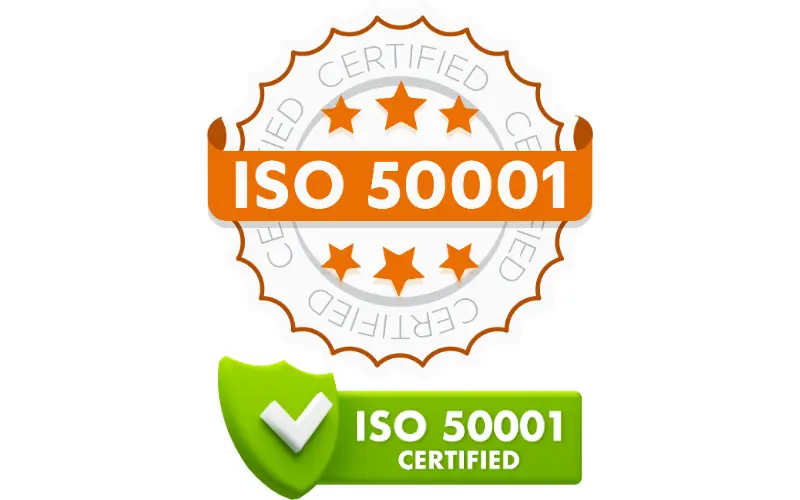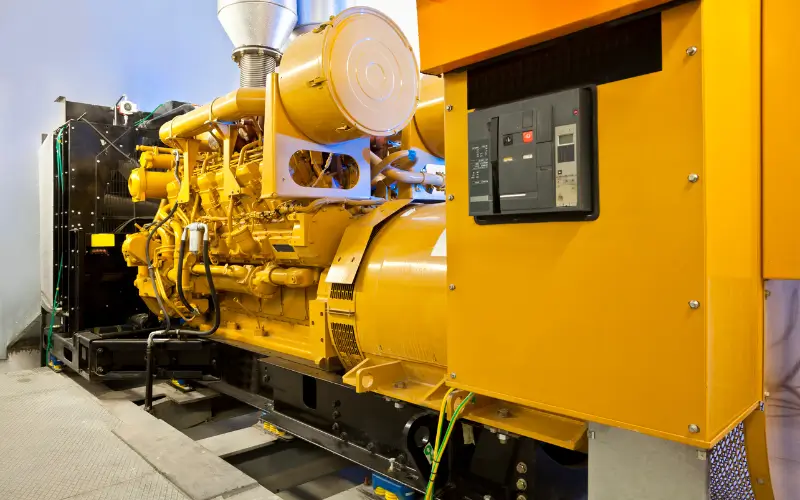Energy costs are soaring, and more homeowners, businesses, and industries are looking for ways to cut their bills without sacrificing comfort or productivity. Energy optimization is the answer—but what does it really deliver?
This guide offers a clear, side-by-side cost comparison: before and after energy optimization. You’ll see exactly how much you can save, how those savings are achieved, and what strategies deliver the best return on investment.
We’ll cover real-world case studies, proven technologies, and smart practices you can adopt to cut energy costs—often by 20%, 50%, or even 90% in some cases.
Whether you’re a homeowner hoping to lower your electricity bill, a facility manager aiming to boost your building’s efficiency, or an industrial decision-maker looking to improve the bottom line, this guide will give you the data and steps you need to make informed decisions.
What Does “Energy Optimization” Mean?
Energy optimization is all about using less energy to achieve the same (or better) results. It means systematically reducing waste, improving efficiency, and making smarter choices about how and when you use energy.
Whether you’re heating a home, powering machinery in a factory, or lighting an office, there’s almost always room to optimize—cutting costs and environmental impact at the same time.
Below, we’ll break down what energy optimization actually includes, who benefits, and why it’s so important.
Definition & Scope
Energy optimization is a strategic approach to reduce energy consumption and costs without sacrificing performance or comfort. It typically involves:
- Energy-efficient retrofits (e.g., insulation, double-glazed windows)
- Upgrading to efficient systems and appliances (e.g., heat pumps, LED lighting)
- Load shifting (using energy during cheaper off-peak hours)
- Smart controls (automated thermostats, zonal heating)
- Renewable energy integration (solar panels, batteries)
- Behavioral changes (e.g., better thermostat settings, scheduling)
Optimization can be as simple as sealing drafts in a home, or as complex as redesigning an industrial process for maximum energy efficiency.
Who Benefits & Why It Matters
Residential Users
- Lower utility bills
- Increased home comfort (consistent temperatures, better air quality)
- Greater energy independence (especially with renewables)
Commercial & Retail Buildings
- Reduced operational costs
- Higher property values
- Meeting sustainability targets (which customers increasingly expect)
Industrial Facilities
- Lower production costs
- Improved process reliability
- Competitive advantage through lower overhead
Environmental Impact
- Less energy demand means fewer fossil fuels burned
- Lower carbon footprint
- Contribution to national/international climate goals
Energy optimization is more than just saving money—it’s about investing in better systems, reducing risk from energy price volatility, and supporting a sustainable future.
Baseline Costs: Understanding “Before”
Before you can appreciate the value of energy optimization, you need to know where your costs start. Energy bills aren’t just about a single flat rate—they include multiple components that can add up quickly.
This section will break down what you’re really paying for, show typical cost examples in homes and businesses, and highlight the starting point for your potential savings.
Components of Energy Bills
Your energy bill is usually made up of several key components:
- Consumption charges: The actual amount of electricity or gas you use (often charged per kWh).
- Peak vs. off-peak rates: Many utilities charge more during times of high demand.
- Demand charges: For commercial/industrial users, extra fees for peak load capacity.
- Fixed fees: Service or supply charges that don’t change with usage.
- Taxes and surcharges: Environmental or regulatory fees.
Understanding these parts is crucial, because optimization can target multiple areas—not just usage.
Typical Household Costs
Residential energy costs vary by region, but average examples help illustrate the baseline:
United Kingdom:
- Average dual-fuel bill (2024): £1,849/year (£150/month)
- Potential for £400–£700/year savings with efficiency measures (source: The Guardian, The Sun)
Australia:
- Average household bill (2024): AUD ~$2,000–$2,500/year
- Reported savings potential up to 90% with full retrofits (source: The Guardian)
Estonia (Case Study):
- Typical old home energy use: ~€1,830/year
- ~€400/year savings possible just from load shifting (source: Towards Data Science)
These numbers show real, significant starting costs that can be slashed with optimization.
Typical Commercial/Industrial Costs
For businesses, energy costs are even more critical:
Commercial Buildings:
- Energy can be 15–25% of operational costs
- Lighting, HVAC, and appliances often top energy users
- High demand charges for peak use
Industrial Facilities:
- Energy = 10–30% of total manufacturing expenses
- Process heating, motors, compressed air are key cost centers
Savings of 10–40% achievable through optimization (source: various industrial energy audit case studies)
Case Study Example
Example: Estonian Single-Family Home
- Before optimization: ~€1,830/year energy cost
- After load shifting only: ~€1,430/year
- Savings: ~€400/year (~22%)
Potential higher savings with insulation, smart controls, and renewables
Key Point: Even basic measures deliver clear, measurable savings.
By understanding these baseline costs, you’ll see exactly where optimization can make a difference—and why so many choose to invest in it.
Optimization Strategies – What to Compare
Once you know your starting energy costs, the next question is: how do you actually reduce them?
Energy optimization isn’t just one thing—it’s a toolbox of strategies that work together to cut consumption, shift usage to cheaper times, and even generate your own power.
Here’s a comprehensive look at the major and minor strategies you’ll want to compare when planning your own energy optimization journey.
Energy Efficiency Retrofits
What it is: Upgrading your building envelope to stop heat loss and reduce energy waste.
Examples:
- Insulating walls and attics
- Double- or triple-glazed windows
- Draught proofing doors and vents
Savings Potential:
- Up to 82–94% bill reduction in extreme cases (Australia)
- Payback period: ~4–10 years
Why it works: Reduces heating/cooling load, so systems run less often and consume less energy.
Efficient Systems & Appliances
What it is: Replacing old, wasteful equipment with modern, high-efficiency versions.
Examples:
- Heat pumps instead of resistance heaters or boilers
- Induction cooktops vs electric coils or gas
- High-efficiency boilers and water heaters
- ENERGY STAR appliances
Savings Potential:
- UK case studies report £490–£690/year household savings
- Lower maintenance and longer equipment life
Why it works: Delivers the same or better service with less energy input.
Renewable Energy Integration
What it is: Generating your own clean energy on-site.
Examples:
- Solar PV panels
- Battery storage systems
- Wind turbines (for rural sites)
Savings Potential:
- Typical payback: 6–14 years
- Annual savings: £600–£2,000 (UK solar storage estimates)
Why it works: Offsets grid electricity purchase entirely, protects against price rises.
Load Shifting & Smart Controls
What it is: Using energy when it’s cheapest, avoiding high-rate peak times.
Examples:
- Smart thermostats and heating schedules
- Charging EVs overnight
- Industrial process scheduling
Savings Potential:
- Estonian homes saved ~€400/year just by load shifting
Why it works: Reduces peak demand charges and capitalizes on lower off-peak tariffs.
Zonal & Smart Heating Controls
What it is: Heating only where and when you need it.
Examples:
- Programmable thermostatic radiator valves
- Zonal underfloor heating controls
- Smart room sensors
Savings Potential:
- 19% average savings in heating costs (UK case studies)
Why it works: Cuts waste by targeting usage.
Behavioral Changes
What it is: Simple, no-cost or low-cost habit changes.
Examples:
- Lowering thermostat settings
- Turning off standby electronics
- Drying clothes naturally
Savings Potential:
- 5–15% of bill reductions possible without spending on upgrades
Why it works: Eliminates waste at the user level.
Quantifying “After” – Savings & Cost Reductions
Now that we know the baseline costs and the strategies available, let’s answer the big question: “How much can you actually save?”
This section provides clear, real-world examples of the cost reductions households, businesses, and industries see after implementing energy optimization measures.
We’ll break down residential, commercial, industrial, and even community-scale results to give you a realistic view of what’s possible.
Residential Results
Australia
- A 2024 study found that with full retrofits—including insulation, efficient appliances, and smart controls—households could cut bills by 82–94%.
- Example cost reduction: AUD ~$2,500/year → ~$150–400/year.
- Typical upgrades: Insulation, heat pumps, zonal heating controls, solar+battery systems.
United Kingdom
- Efficient heating systems, insulation, and upgraded appliances typically save £400–£700/year.
- Households installing solar and battery packages reported annual savings of £600–£2,000, with payback periods around 6–14 years.
Estonia
- Load shifting alone reduced single-family home energy costs by ~€400/year (~22% savings).
- More comprehensive retrofits would increase these savings substantially.
Commercial & Industrial Efficiency
Commercial Buildings
- Energy retrofits can reduce usage by 20–43%.
- Example: Chinese retail retrofit achieved ~25% energy reduction, saving ~¥1.25 million annually.
- Measures included improved insulation, smart lighting, and optimized HVAC scheduling.
Industrial Facilities
- Load optimization and process improvements typically yield 4–8% energy savings—often enough to pay back investment in under 2–4 years.
- Some advanced industrial retrofits show 10–40% reductions in total energy costs through process redesign, motor upgrades, and automation.
Microgrid/Community Savings
Community Microgrids
- Case study: Australian rural microgrid project delivered 84% reduction in overall energy costs for participating households.
- Peak demand was cut by 43%, reducing infrastructure strain and further lowering costs.
Benefits beyond bills:
- Greater energy independence.
- Protection against blackouts or price shocks.
- Stronger local resilience.
Key Numbers at a Glance
| Sector | Typical “Before” Cost | Typical Savings After Optimization | % Reduction |
| Residential | £1,800–£2,500/year | £400–£2,000/year | 20–90% |
| Commercial | Varies by building | 20–43% energy cost reduction | 20–43% |
| Industrial | 10–30% of expenses | 4–40% energy cost reduction | 4–40% |
| Community | Aggregate cost | Up to 84% cost reduction | Up to 84% |
Before vs After Side-by-Side Comparisons
Seeing raw savings numbers is helpful, but it’s even clearer when you lay them out side by side.
Below is a practical comparison showing what typical energy costs look like before and after optimization—for households, commercial buildings, and industrial facilities.
These tables and visual guides make it easy to understand the real impact of investing in energy efficiency.
Residential Example – UK Household
| Item | Before Optimization | After Optimization | Notes |
| Annual energy cost | £1,849/year | £849–£1,449/year | Savings of £400–£1,000/year depending on measures |
| Upgrades | Minimal or none | Insulation, heat pump, solar | Payback periods 4–14 years |
| Energy usage consistency | High seasonal peaks | Reduced peaks with smart controls | Avoids higher tariffs during peak times |
| Comfort | Drafty or uneven heating | Even, efficient heating | Better temperature control |
Result: 20–50% reduction in bills for many households; up to 90% with full retrofits and renewables.
Residential Example – Australia
| Item | Before | After | Notes |
| Annual energy cost | AUD ~$2,500/year | AUD ~$150–400/year | Up to 94% reduction reported in studies |
| Upgrades | Poor insulation, old systems | Comprehensive retrofit, solar+battery | High upfront cost, long-term payback |
| Comfort | Variable temperatures | Consistent, efficient heating | Improved liveability |
Result: Extreme savings in climates with high heating/cooling demand.
Commercial/Retail Building Example
| Item | Before Optimization | After Optimization | Notes |
| Energy cost share | 15–25% of operational costs | 12–20% | Typical 20–43% reductions achievable |
| Strategies | Basic systems | Smart lighting, HVAC scheduling, insulation | Often eligible for rebates and tax incentives |
| Peak demand charges | High | Lowered with load scheduling | Reduces grid strain |
Result: Cost savings plus improved sustainability ratings for marketing and compliance.
Industrial Facility Example
| Item | Before Optimization | After Optimization | Notes |
| Energy share of expenses | 10–30% | 6–27% | 4–40% savings range depending on measures |
| Typical measures | Standard motors/processes | Variable-speed drives, heat recovery, automation | Requires detailed audit for ROI targeting |
| Payback period | N/A | Often 2–4 years | Fast ROI for many retrofits |
Result: Competitive advantage through lower unit production costs.
Community Microgrid Example
| Item | Before | After | Notes |
| Aggregate energy cost | 100% baseline | ~16% of original cost | Up to 84% reduction with microgrid integration |
| Strategies | Central grid only | Local renewables, batteries, demand management | High setup cost, shared community benefits |
| Peak demand | High | ~43% reduction | Helps grid stability and avoids expensive upgrades |
Result: Dramatic reductions, especially in rural or off-grid contexts.
Visual Diagrams & Comparison Grids
Ideas for Illustrations in the Blog:
- Bar charts: Before vs After costs for each sector
- Pie charts: Energy cost share before/after optimization
- Timeline diagrams: Payback periods for typical upgrades
- Infographics summarizing % savings ranges by strategy
Factors Influencing Savings
It’s tempting to see the big headline savings numbers—like 40% or 90% reductions—and think you’re guaranteed those results.
But the real savings you achieve depend on several key factors. Understanding these will help you set realistic expectations and plan the most effective optimization strategy for your situation.
Energy Prices & Tariffs
Why it matters:
- Energy cost structures vary dramatically between regions and even between utility companies.
Examples:
- Peak vs. off-peak pricing (Time-of-Use tariffs)
- Fixed-rate contracts vs variable rates
- Demand charges for large users
Impact on savings:
- Load shifting and smart scheduling can deliver huge gains if peak pricing is high.
- Regions with high per-kWh costs see faster ROI from efficiency measures.
- Fixed-rate deals can limit savings from shifting demand but improve cost predictability.
Building Characteristics
Why it matters:
- Your building’s design, age, and condition set the baseline for what’s possible.
Key variables:
- Insulation level (walls, roof, floors)
- Air leakage/draughts
- Window quality
- HVAC system efficiency
- Lighting system type
Impact on savings:
- Older, poorly insulated buildings often see the largest percentage reductions.
- Newer or well-insulated buildings may have smaller savings potential from envelope upgrades—but can still benefit from smart controls and renewables.
Region-Specific Incentives & Rebates
Why it matters:
- Governments often subsidize energy efficiency upgrades.
Examples:
- UK ECO4 grants for insulation and heating systems
- Australia’s state and federal rebates for solar, batteries, and retrofits
- EU renovation support schemes
- Utility company rebates for efficient appliances
Impact on savings:
- Reduces upfront cost, improving ROI.
- Makes higher-cost measures like solar+storage more accessible.
User Behavior & Control Systems
Why it matters:
- Even the best equipment can underperform if used poorly.
Examples:
- Leaving lights and appliances on unnecessarily
- Overheating or overcooling spaces
- Not using smart thermostat schedules
- Charging EVs at peak times without scheduling
Impact on savings:
- Poor user behavior can undermine expected reductions.
- Smart controls can automate efficiency and ensure consistent savings.
Summary Table – Factors Impacting Savings
| Factor | How It Affects Savings | Example Impact |
| Energy prices/tariffs | Determines value of shifting/reducing usage | Higher tariffs = faster payback |
| Building characteristics | Sets baseline efficiency and retrofit potential | Older buildings = bigger potential |
| Incentives/rebates | Lowers upfront cost, improves ROI | Grants can cut payback time in half |
| User behavior/controls | Ensures ongoing savings | Smart thermostats can save 10–20% |
Implementation Approach & ROI Timeline
Energy optimization can sound overwhelming at first—where do you start? How much will it cost? When do you get your money back?
This section provides a step-by-step approach to planning and implementing an energy optimization project, with realistic expectations for costs and payback periods.
Steps to Get Started
1. Conduct an Energy Audit
- The first and most important step.
- Identifies where energy is being wasted.
- Prioritizes cost-effective measures.
- Can be DIY (for homes) or professional (for larger buildings/industrial facilities).
2. Set Clear Goals
- Reduce costs by X%
- Cut carbon emissions
- Improve comfort or productivity
- Increase energy independence
3. Plan Phased Measures
- Start with low-cost, high-impact actions (e.g., insulation, smart thermostats).
- Plan for larger investments over time (e.g., heat pumps, solar).
- Coordinate with contractors and suppliers.
4. Secure Financing or Incentives
- Investigate grants, rebates, and low-interest loans.
- Many regions offer generous support for efficiency projects.
5. Implement and Verify
- Install upgrades professionally for best results.
- Use smart meters and monitoring tools to confirm savings.
6. Review and Adjust
- Track energy use over time.
- Refine schedules and settings.
- Consider further measures if ROI is strong.
Typical Costs and Payback Periods
Savings aren’t free—there’s an upfront investment. But most measures pay for themselves over time through lower bills.
Example Costs and Payback Estimates:
| Measure | Typical Cost (Residential) | Typical Payback Period |
| Draught-proofing | £100–£300 | < 1 year |
| Insulation (loft/walls) | £500–£3,000 | 2–10 years |
| Double glazing | £3,000–£6,000 | 5–15 years |
| Heat pump installation | £7,000–£15,000 | 7–15 years (with grant) |
| Solar PV + Battery | £6,000–£15,000 | 6–14 years |
| Smart controls / thermostats | £50–£500 | 1–3 years |
Commercial/Industrial Examples:
Lighting upgrades: 1–3 year payback.
HVAC optimization: 2–5 years.
Process improvements: 2–4 years.
Solar PV (larger scale): 5–10 years.
Key insight:
- Low-cost measures often pay back in under a year.
- Higher-cost measures have longer payback but keep saving for decades.
Tracking Progress
Why it matters:
- Ensures savings are real, not theoretical.
- Identifies maintenance issues early.
- Helps justify future investments.
Tools:
- Smart meters with usage dashboards.
- Utility billing analysis.
- Commercial/industrial energy management systems (EMS).
- Manual tracking with spreadsheets for small users.
Common Challenges & How to Overcome Them
While energy optimization offers impressive benefits, it’s not always a smooth ride. Many people and organizations face hurdles that can delay or limit their savings.
This section covers the most common challenges—and practical solutions to overcome them.
High Upfront Costs
Challenge:
The initial investment for upgrades like insulation, heat pumps, or solar panels can be substantial.
Solutions:
- Seek government grants, rebates, or utility incentives to reduce costs.
- Explore financing options like low-interest loans or on-bill financing.
- Prioritize low-cost, high-impact measures first to start saving immediately.
- Consider phased approaches spreading costs over time.
Technical Complexity
Challenge:
- Energy optimization often involves specialized equipment and complex installations.
- Lack of expertise can lead to poor outcomes or frustration.
Solutions:
- Work with certified professionals and trusted installers.
- Use third-party audits to identify the best measures.
- Choose turnkey solutions with warranties and support.
- Educate yourself about the basics so you can make informed decisions.
Behavior Change Resistance
Challenge:
- Even with the best tech, user habits can undermine savings.
- People may resist adjusting thermostat settings or scheduling appliances.
Solutions:
- Promote awareness of benefits (cost and comfort).
- Use smart controls that automate energy-saving behavior.
- Start with small changes to build confidence and acceptance.
- Provide training or materials for facility staff or household members.
Uncertain ROI Timelines
Challenge:
- Some worry the payback period is too long or unclear.
Solutions:
- Use detailed audits and cost-benefit analyses upfront.
- Factor in incentives and rising energy prices in projections.
- Start with no/low-cost measures with immediate returns.
- Monitor and track savings regularly to validate projections.
Maintenance & Upkeep
Challenge:
- Systems like heat pumps, batteries, or smart controls require upkeep.
Solutions:
- Choose equipment with good support and warranties.
- Schedule regular maintenance checks.
- Use monitoring tools to catch issues early.
Real-Life Success Stories
Nothing inspires confidence like seeing how others have transformed their energy costs through optimization. Here are some real-world examples—from homeowners to businesses and community projects—that show the power of energy optimization in action.
Residential Success Stories
Australian Homeowner:
- Implemented a full retrofit with insulation, heat pump heating, and solar PV + battery system.
- Achieved an 82–94% reduction in annual energy bills, cutting costs from AUD $2,500 to under $400 per year.
- Improved home comfort with even temperatures and quieter heating.
UK Homeowner (Leeds):
- Upgraded to double glazing, efficient boiler, and smart thermostat controls.
- Reduced annual energy expenses by £1,500–£2,000.
- Benefit from government grants that shortened payback period to under 5 years.
Commercial & Retail Success
Chinese Retail Mall Retrofit:
- Undertook energy-efficient lighting upgrades, HVAC optimization, and improved insulation.
- Reduced total energy consumption by 25%, saving approximately ¥1.25 million annually.
- Gained positive customer feedback for greener store environment.
US Office Building:
- Installed smart lighting controls and zonal HVAC systems.
- Achieved 30% reduction in energy usage within 2 years, lowering operating costs substantially.
Community Microgrid Success
Australian Rural Microgrid:
- Integrated solar PV, battery storage, and demand management for a rural community.
- Delivered 84% reduction in energy costs for residents.
- Cut peak demand by 43%, reducing infrastructure strain and blackout risk.
Conclusion & Recommendations
Energy optimization is not just a buzzword—it’s a practical, proven strategy to reduce energy costs, improve comfort, and contribute to a sustainable future.
By comparing before and after energy costs, it’s clear that smart investments in efficiency, renewable energy, and behavioral changes deliver significant savings—often cutting bills by 20%, 50%, or even more than 80% in some cases.
Key takeaways:
- Understand your current energy costs and consumption patterns as the baseline.
- Explore a mix of retrofit upgrades, efficient appliances, renewable integration, and smart controls.
- Tailor solutions to your building’s characteristics, energy prices, and available incentives.
- Monitor usage and behavior to maximize ongoing savings.
- Don’t let upfront costs deter you—many measures pay back quickly and grants can reduce expenses.
By taking a systematic, informed approach, homeowners, businesses, and communities can join the energy savings revolution—and protect themselves against rising prices and environmental risks.
Recommendations for Getting Started
- Start with a comprehensive energy audit.
- Prioritize low-cost, high-impact improvements first.
- Leverage government or utility rebates and incentives.
- Invest in smart controls and behavioral changes.
- Plan for long-term upgrades like solar and heat pumps if viable.
- Track your progress and adjust for continuous improvement.
Energy optimization is a journey—but one with powerful rewards for your wallet and the planet.
FAQs
What is energy optimization?
Energy optimization means using less energy to get the same or better results by improving efficiency, shifting loads, and integrating renewables.
How much can I save with energy optimization?
Savings vary, but can range from 20% to over 80% depending on your starting point and measures adopted.
Are energy optimization upgrades expensive?
Some upgrades have high upfront costs, but many low-cost measures pay back quickly; incentives can reduce costs significantly.
How do I know which optimization measures are right for me?
A professional energy audit can identify the most cost-effective strategies for your specific situation.
Can I optimize energy use without installing new equipment?
Yes, behavioral changes and load shifting using smart controls can yield meaningful savings at little to no cost.




